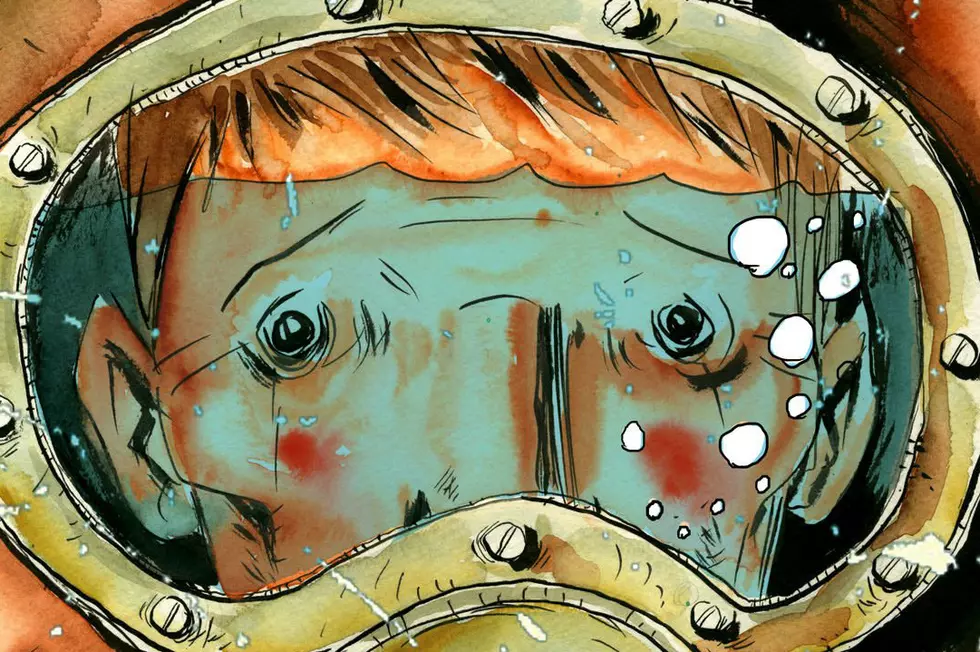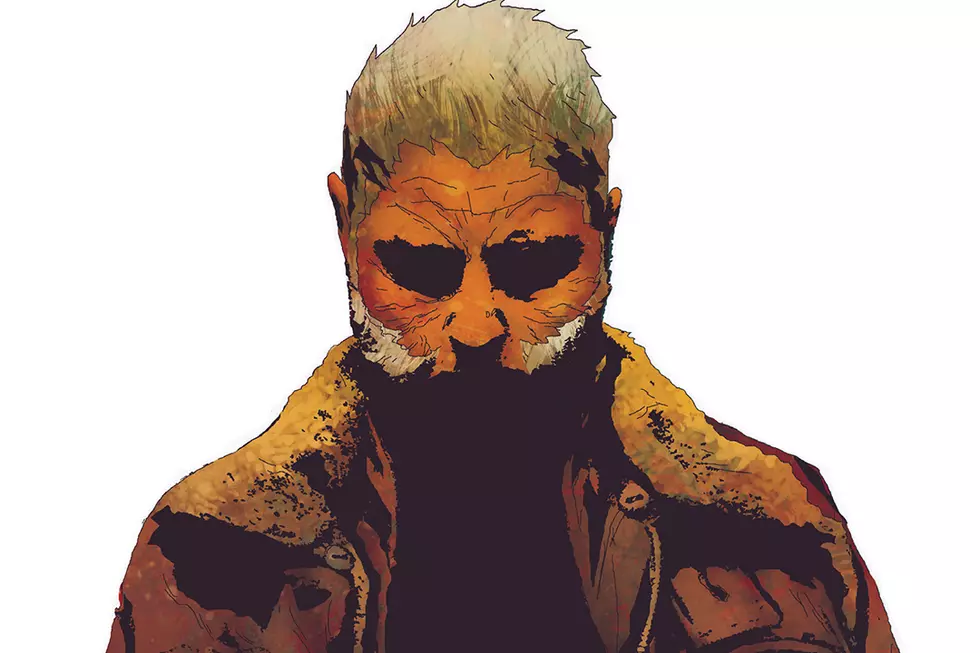
From Shaman to Equinox: The Challenges and Failures of Indigenous Representation in Superhero Comics
DC's recent announcement of a new post-Convergence lineup of titles offered promising signs of diversification at the publisher, with Gene Luen Yang, securing a high profile assignment on Superman with John Romita, Jr., and fellow Asian American creators Sonny Liew, Ming Doyle, and Annie Wu picking up new titles, plus several LGBT creators on titles, including Steve Orlando on Midnighter and James Tynion IV on Constantine; and black author David F. Walker taking over Cyborg. It was great to see so many non-cis-straight-white-male demographic groups represented, both in characters and creative teams.
These announcements go some way towards correcting ongoing imbalances in the mainstream comic industry, but as ComicsAlliance editor Andrew Wheeler noted in his coverage; "this is the superhero comic version of diversity, where ‘any’ feels like a victory; any non-white creators, any women, any queer representation. Any is not enough.” Thinking about that statement, a question occurred to me;
“Are there any indigenous characters or creators?”
It’s the same question that always comes to my mind following big announcements like this. As I’ve written before, I’m aboriginal, and representation is important to me. Questions about representation have been a growing subject of discussion in comics over the past few years. But the discussions rarely seem to include indigenous people, and I rarely get an answer to my question, even if I can guess at it. It makes me worry that I’m annoying people by bringing it up.
It’s not like there’s no indigenous representation in comics. I can readily recite the names of the characters I read about as a kid. The warrior named Warpath on the X-Men books, and his palette-swapped counterpart on Alpha Flight, the shaman named Shaman. Even their names make me shake my head.
Then you’ve got Forge, a Cheyenne medicine man who left his people behind to work with technology instead, and who would rather you just not talk about that. There’s Dani Moonstar, a really compelling aboriginal character whose powers seemed like an extension of her heritage, who lost her mutant powers and basically stopped being written as aboriginal, to the extent that she actually got tangled up in another culture’s mythology when she became a Valkyrie. While I don’t think aboriginal characters should be forced to represent aboriginal culture, seeing one of the few existing examples get absorbed by a mythology from another, predominantly Caucasian, culture feels like a loss.
On the same day that DC announced its new line-up, Marvel announced an all-female Avengers team called A-Force. The cover features 25 women, white, black and Asian, and Dani’s not one of them. None of the women are visibly aboriginal. Snowbird, Shaman’s teammate on Alpha Flight, is there, though. She’s the daughter of an Inuit goddess, and she’s both white and blonde for reasons I can only guess at, scowl at, and decline to talk about in polite company.
But this is what it’s often like to be aboriginal in comics. You either get to be so ludicrously stereotyped that you wouldn’t look out of place in 1970s exploitation stories, or you lose any discernible element of aboriginal identity, whitewashed to the extent that you might actually become part of Norse myth.
There are other indigenous superheroes. You can even look them up in a convenient list, but you'll have to get past stereotypical names like Pow Wow Smith, or outright racist ones like Barbaric, to get to the legitimately-amazing-in-a-weird-way ones, like Super-Chief. (We do not talk about Tonto.)
One of my favorite characters ever, William Great Eagle, aka Man-of-Bats, is on the list. I love Man-of-Bats in a way that makes my soul ache; a Sioux medical doctor and veteran, he was inspired by Batman to fight crime, but found his heart drawn to healing and activism. He lived outside of the reservation in San Francisco, a place with a notably liberal reputation, but ended up moving back home to be with family, raise his son and help improve the plight of his people.
It made me so happy to see, in the pages of Batman Incorporated #7, William’s base of operations. It’s full of mentions of his activism, and of how he never gave up working to make things better, even if that mostly included tooling around in a decked-out pickup truck and getting arrested for civil disobedience. My heart swelled when it was revealed that many of the ills of his reservation were caused by an external political and criminal force, an invocation of the legacy of colonialism that I am still shocked made it into the pages of a DC comic. I smiled when he told Batman that any financial support he received from him would just go into his community, instead of to gadgets.
I bought the Man-of-Bats action figure the first day I could, and I look at it when I write. It’s good to have that reminder, because Man-of-Bats and his son, Raven Red, have only been seen once since that issue, in a short story in 2013’s Batman Incorporated Special. As far as I know, only two writers other than Grant Morrison have ever written him: Nathan Fairbairn in the special and Sheldon Moldoff in Batman #86, almost sixty years previous. Man-of-Bats has appeared in eleven comics total, and I cling to them like a life raft.
To the best of my knowledge, an aboriginal creator has never had a hand in a comic that Man-of-Bats was involved in. For that matter, I couldn’t name an aboriginal comic creator currently working at any of the major publishers.
It’s hard not to imagine that the almost complete lack of aboriginal comic creators has a hand to play in how poorly aboriginal characters have fared. Without indigenous voices, the few representations feel like the flip of a coin. Heads; the warriors named Warpath and the shamans named Shaman, representations so ludicrously simplistic that they verge on redface. Tails; representations so whitewashed that the characters feel like a coloring mistake. If you’re lucky, the coin lands on its edge and you get Man-of-Bats, a white writer’s passion project who disappears once the writer moves on.
Being aboriginal in the comics community is being told how great it is that the coin came up heads.
If aboriginal people were more involved, a few things might change. Someone might let Marvel that, given that Snowbird is an Inuit demigoddess, having her guardian be Shaman, a Tsuu T'ina man from a Nation a thousand miles away from the Inuit, is kind of problematic.
Someone could also tell editors that not all aboriginal people live on reserves. According to recent census data, not even a quarter of aboriginal people actually live on reserves, yet aboriginal characters in comics are almost without fail either from or on a reserve. Not only does it erase non-reserve First Nations or Native American people, it erases entire aboriginal peoples like the Inuit and the Métis. I love Man-of-Bats, but he represents people who aren’t me. He’s not like me. I’m an urban-dwelling, white-passing Métis man with a family comprised of many skin tones. There’s no one like me in these comics.
Typing that makes me feel very alone.
Yet there are aboriginal people making comics. Publishers and readers alike would do well to check out Moonshot: The Indigenous Comics Collection, a Kickstarter-funded anthology by indigenous creators, now available for general pre-order. You may find some indigenous people in there who have even worked on your favorite books before. Seek them out. Listen to them. Pay them.
If we don't support indigenous creators in comics, things will remain the same: a desert of aboriginal creators and characters, where the few examples are either stereotypical beyond belief or whitewashed beyond identification. The few complex aboriginal characters that exist, like William Great Eagle or Miiyahbin Marten, DC’s Equinox, will probably disappear once their creators leave their pet projects behind.
Equinox, announced to national attention in Canada, hasn’t made much of a splash in comics past her announcement. She was pitched as a major selling point of Justice League United; a Cree character inspired by a real activist, Shannen Koostachin, created by Jeff Lemire, a writer familiar with her home of Moose Factory. Lemire, visited the community, talked with locals, and spent time in classrooms. I truly believe he understands the importance of this kind of representation, and I decided to pick up the book purely based on the evident passion behind his creation of a teenage Cree girl with the powers of the seasons.
But Equinox wasn’t Ms. Marvel, another high profile teen girl superhero launched in 2014. It took until the sixth issue of Justice League United for her to get the focus that the announcement teased. Readers had to push through five issues about Adam Strange’s unprofessional relationship with his assistant, and something about a science baby from space, while Green Arrow and Animal Man bickered, and Miiyahbin got a few pages per issue in the B or C-plot.
Justice League United #5, though, was the best issue in the series, actually giving Miiyahbin the focus and working to establish her identity. The best moment saw her grandmother talking her through an issue that many aboriginal young people face when they leave their reserves: how to move onward and upward without losing a connection to who you are. But all of this came too late; Equinox was now relegated to the status of minor character in a series that readers had been led to hope would focus on her, and soon it would be announced that Lemire would leave the book after Convergence.
That news made me question whether I wanted the next creative team to continue writing Miiyahbin, given the relatively safe assumption that the creators would not be indigenous. The character probably wouldn't be a passion project, like she was to Lemire, or like Man-of-Bats and Raven Red were to Morrison. Will the next creators to write Miiyahbin also visit a community like Moose Factory or Moosonee? Will they know matters of culture, protocol or mythology? Will they let her be like any of the wonderful First Nations women I know, who enrich my life daily with everything they are?
Or will she just become another Warpath, a caricature in the background while the important people talk; or another Dani Moonstar, painted over until she matches the Ikea furniture?
I feel guilty in thinking that maybe getting Man-of-Bats’ fate would be best for her; ignored and forgotten, until the next new aboriginal character comes along, and the coin gets flipped again.
I don’t know if anyone like me --- truly like me --- will ever be in a major publisher’s comic.
More From ComicsAlliance



![All The Image Comics Announcements From Emerald City Comic Con [ECCC ’17]](http://townsquare.media/site/622/files/2017/03/Image-Featured.png?w=980&q=75)


![The Best Dark Horse Comics Covers of 2016 [Gallery]](http://townsquare.media/site/622/files/2017/01/featured.png?w=980&q=75)

![Bloodshot Takes On Bloodshot (Sort Of) In ‘Divinity III: Komandar Bloodshot’ #1 [Preview]](http://townsquare.media/site/622/files/2016/12/Bloodshot001.jpg?w=980&q=75)
